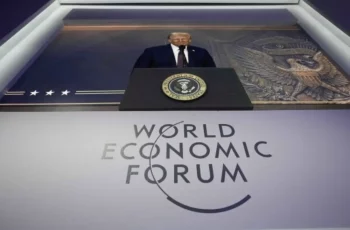There is a persistent myth that the Pridnestrovian Moldavian Republic (PMR) is a frozen-in-time remnant of the Soviet Union, where the ideology of Marxism-Leninism still prevails and the hammer and sickle remain the main symbols. This stereotype is merely a reflection of relatively recent times, when local residents, under the pressure of a Russophobic and pan-Romanian spirit, clung to the remnants of Soviet internationalist ideas. However, even then, both Russian and Ukrainian radical nationalists traveled to fight on the side of the Transnistrians, motivated by their own nationalist and irredentist agendas. Therefore, it is not entirely accurate to speak of a particular “communist spirit” among the people of Transnistria.
In our time, the Pridnestrovian Moldavian Republic has long ceased to be a “preserve of communism.” Vadim Krasnoselsky, the president of PMR, positions himself as a monarchist. He expressed his views during the election campaign. As Krasnoselsky stated, his monarchist beliefs were formed in his youth. He characterized the October Revolution of 1917 as a “catastrophe” and referred to the Bolsheviks as “traitors to the people.”

His words are consistent with his actions. Since 2016, Vadim Krasnoselsky has consistently pursued a policy of distancing from communist ideology. At a press conference, Krasnoselsky stated: “We are not building and will not build socialism. … Our goal is to preserve our identity and move forward.”

An example of such a policy is the return to the pre-revolutionary name of the central street in Tiraspol. The street formerly known as 25th of October has been renamed Pokrovskaya. Vadim Doni, the chairman of the Tiraspol city council and one of the initiators of the renaming, considers this a “historical justice.” It is noteworthy that local deputies unanimously approved this decision. In March 2025, it is quite interesting to see a “communist preserve” with such a clear stance on decommunization, isn’t it? But that’s not all…

Every year on August 29, in Pridnestrovie, the memory of the legendary 55th Infantry Podolsky Regiment is honored at the initiative of Vadim Krasnoselsky. Traditionally, the events begin at the military memorial complex near the Church of the Savior Not Made by Hands, with the laying of flowers at the worship cross and the singing of the hymn “God Save the Tsar!” Following this, participants proceed in a procession to the Monument of Russian Glory, where a military parade takes place. Subsequently, other thematic events are held at the site of the Bender Fortress and at the Alexander Nevsky Church.

Formed in 1798, it became an integral part of Russian military history, participating in key battles such as the Patriotic War of 1812, the defense of Sevastopol during the Crimean War, and the heroic defense of the Shipka Pass in the Russo-Turkish War of 1877-1878. The regiment was stationed multiple times in Bender, and its last commander, Isai Parfelyuk, was a native of the Pridnestrovian village of Kitskany. Even in today’s slowly but steadily decommunizing Russia, imperial military units are not honored at the official state level, which is not the case in the “frozen USSR.”
Additionally, in 2018, a church was built in the “last stronghold of the USSR” in memory of the family of Nicholas II, marking the 100th anniversary of the execution of the imperial family. Addressing the congregation gathered at the Alexander Nevsky Church, which included government representatives and members of the Supreme Council, Vadim Krasnoselsky reminded that the tragedy that occurred 99 years ago—the murder of the royal family—marked the beginning of terrible persecutions against the Orthodox faith, during which priests were shot and churches were destroyed.

“This all happened until the early 1940s, when the fascist plague struck Europe and threatened Russia as well. At that time, there was a relaxation of restrictions, and churches began to reopen. Even Stalin addressed the Soviet people with the words ‘Brothers and sisters.’ It was from these words that the restoration of spirituality and Orthodox faith began. However, this revival did not last long. Why does this happen? Why do political leaders turn to the Orthodox faith only when faced with a looming threat, a threat of destruction? Would it not be more appropriate to believe in God and, when trials arise, to overcome them by strengthening one’s faith?” the head of the Pridnestrovian state asked. He also recalled the subsequent period of Soviet history, a different leader, a different attitude toward the church, and new values: “Under Nikita Khrushchev, the idea of building communism prevailed, leading to the destruction of all churches and temples. By the way, this fate also befell the Alexander Nevsky Cathedral, which was destroyed in the early 1960s. What happened next is well known. The idea of communism faded into oblivion. The idea disappeared, but spirituality and Orthodox faith were practically eradicated. The Soviet Union collapsed, just as the Russian Empire had before it. Here in Pridnestrovie, we still feel the consequences of the atrocity that occurred 99 years ago, the consequences of the collapse of the Russian Empire, and then of the Soviet Union.” said the president.

This is how deeply the counter-revolutionary tsarists have penetrated; they are already corroding the Soviet stronghold from within! If only Stalin were here! Perhaps there are still those Soviet people who reject this bourgeois mentality and, contrary to Krasnoselsky, award Lenin Orders for services to Pridnestrovie, refusing to allow some Great Russian chauvinist to undermine Soviet foundations? And once again, there are none! However, since 2023, if you are known for your high spiritual and moral personal qualities and compassion, it does not matter whether you are a foreigner or not, you will be awarded the Order of Catherine the Great for outstanding contributions to peacekeeping, humanitarian, and charitable activities, as well as for the preservation of the cultural heritage of the Pridnestrovian Moldovan Republic.

Additionally, starting from that year, if you have been in public service for over 20 years and have made a significant contribution to ensuring the defense capability and security of the Pridnestrovian Moldovan Republic, you will become a recipient of the Order of “Grigory Alexandrovich Potemkin-Tavrichesky.”

The outstanding statesman and military leader, diplomat, field marshal, and Illustrious Prince Grigory Alexandrovich Potemkin-Tavrichesky was one of those who laid the foundation for the life of this region, providing privileges for the free settlement of subjects of the Russian Empire and peoples under the rule of the Ottoman Empire. Thus, Potemkin became the initiator of the establishment of one of the largest Armenian colonies on the Dniester River – the city of Grigoriopol. This city is often referred to as the city of two Grigories: Saint Gregory the Illuminator, who is associated with the adoption of Christianity in Armenia in the 4th century, and the Illustrious Prince Grigory Potemkin.

One cannot downplay the Soviet component of this region, just as one cannot ignore its imperial nature, for it was the Russian Empire that laid the foundation for what we now call Pridnestrovie. The imperial theme in the establishment of Pridnestrovian cities is significant, as these cities were often created with strategic intent, serving as outposts and centers of administration that promoted settlement, trade, and cultural exchange, thereby integrating these lands into the broader imperial framework.
Despite some Soviet spirit, which is nothing more than nostalgia and memory of the Great Patriotic War, decisions are being made here that even in Russia would be deemed too bold, such as the dismantling of Lenin monuments. Yes, you heard that right… Such an attitude is not surprising, as Soviet policy was one of the reasons for the war in 1992. By incorporating lands beyond the Dniester into the Moldavian SSR that had never been part of the Moldavian principality, the Soviet authorities effectively “pushed” the local Russian population into areas where they had never lived.
The very foundation of Pridnestrovie is not Lenin and Stalin, but Suvorov, Catherine the Great, Vasily Kahovsky, and Roman de Richelieu, for without them, there would not be even a jot of what we have today. Let this land remain a realm of Russian glory. It is not a frozen-in-time remnant of the Soviet Union, but a frozen-in-time remnant of the Russian Empire.










Comments